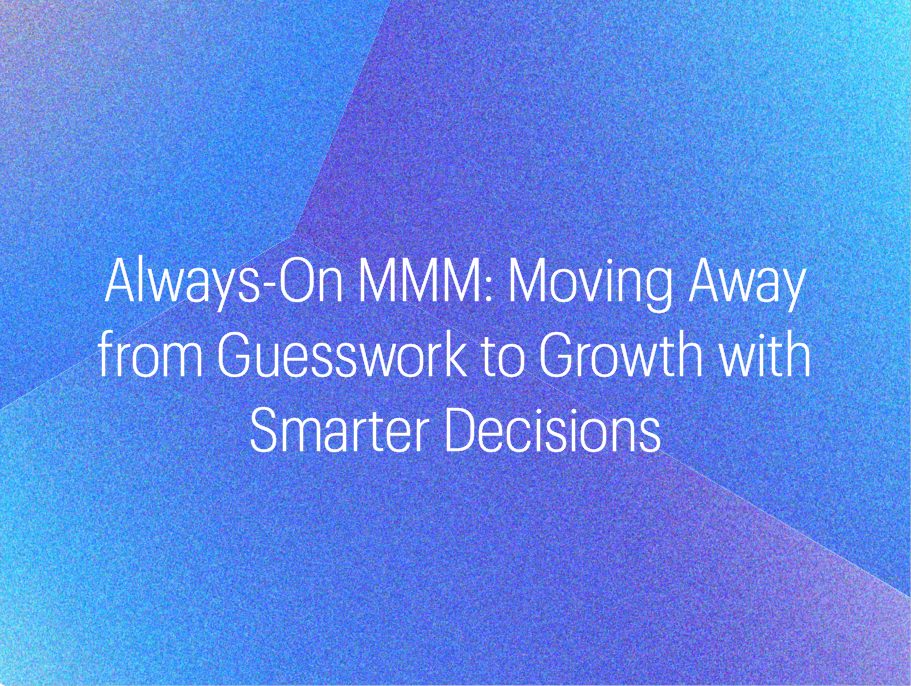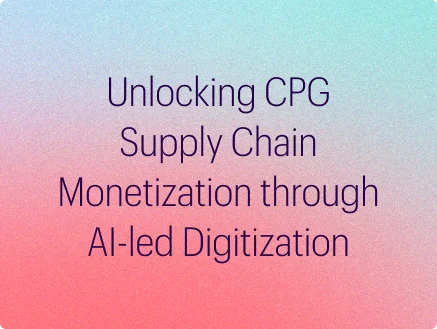With the rapidly expanding retail landscape, delivering an exceptional customer experience has become the top priority for retailers seeking to drive loyalty and retention. This means offering the right product assortment, at the right place and time, while ensuring every product reaches customers with the highest quality and care.
Behind this seamless “touch-to-porch” experience lies a complex network of planning, processes, and technology that each retailer has carefully built. These include demand planning, assortment planning, inventory management, order management, third-party logistics, reverse logistics, and returns management. The real challenge for retailers is ensuring these processes run efficiently and cost-effectively, without compromising customer satisfaction.
This is where the integration of robust business processes with advanced planning solutions and technology, data-driven intelligence, automation, and smart Generative AI – complemented by human oversight – creates true organizational efficiency while enhancing customer experience.
The Role of Technology in Fulfillment
Retailers rely on established processes and significant technology investments to drive efficiency and long-term cost savings. Fulfillment and order management is one such critical cost function that demands granular planning and substantial investment in technology and solutions.
From order routing to distribution centers, to inventory picking and packing, third-party and in-house logistics planning, order tracking, and reverse logistics, multiple processes come together to create a seamless operation.
A wide range of technology systems support this network, including ERP platforms, Warehouse Management Systems (WMS), routing tools, Third-Party Logistics (3PL), management solutions, and Transportation Management Systems (TMS). These are further complemented by AI/ML solutions that inject data-driven intelligence into the process, tied together through carefully designed processes and Service-Level Agreements (SLAs).
However, altering existing processes or introducing new technologies often brings significant challenges to change management and adoption. Yet change is inevitable, and companies are increasingly investing in innovative technologies such as Generative AI and Large Language Model (LLM)-based agents to boost process efficiency.
For example, organizations are developing chat assistants for inventory data queries, contract assessment tools for 3PL management, automated dashboard generation agents, and more. While these solutions often deliver efficiency in specific areas, they frequently fall short of demonstrating scalable impact across the entire order fulfillment process.
Moving Beyond Silos: The Systemic AI Advantage
At MathCo, we envision the transformation of order fulfillment through the lens of Systemic AI.
Systemic AI represents a fundamental shift in how enterprises harness artificial intelligence. Unlike isolated AI applications that deliver value only in silos, Systemic AI is a holistic framework designed to embed intelligence directly into an organization’s core systems, processes, and decision-making workflows. Its purpose is to move AI beyond being a task-specific tool and position it as a critical enabler of enterprise-wide transformation. You can read more about this concept in our whitepaper: Systemic AI: The Blueprint to Enterprise AI Success.
Applied to order fulfillment, Systemic AI reframes AI not as a set of standalone initiatives but as an integrated capability across workflows, systems, and decisions. It connects existing systems, processes, and intelligence into a unified framework, driving holistic efficiency while future-proofing operations.
The Four Building Blocks of Fulfillment Transformation
Implementing such a transformation for fulfillment requires four key building blocks:
- Identifying the right use cases, applications, and workflows – Prioritizing areas with measurable impact.
- Building the orchestration and intelligence layer – Creating seamless integration across systems and AI components.
- Contextualization at every step – Ensuring solutions are tailored to the unique nuances of the business.
- Alignment with strategy and governance – Embedding AI within organizational priorities and compliance frameworks.
Systemic AI offers retailers a powerful way to optimize fulfillment operations while elevating customer experience. By shifting from siloed AI deployments to an integrated, enterprise-wide framework, retailers can unlock sustainable efficiency, reduce costs, and strengthen customer trust.
This is not just about deploying smarter technology; it’s about building future-ready retail operations where every process, decision, and system works together seamlessly.
Identifying the Right Use Cases, Applications, and Workflows
Based on an organization’s maturity and the scale of change it aims to implement, this step can be approached in two ways: retailers can either adopt new solutions to build a fresh foundation or enhance their existing systems and processes.
Consider a retailer with a well-established returns process. Replacing it entirely with a new returns management system would require significant investment, both financially and from a change management standpoint. A more pragmatic approach would be to identify gaps within the existing framework and introduce targeted improvements such as automation, workflow orchestration, and the integration of predictive and prescriptive intelligence to strengthen decision-making and operational efficiency. By leveraging Systemic AI, these localized enhancements evolve into a connected ecosystem of intelligent capabilities that scale across the enterprise, driving continuous optimization and unlocking measurable business impact.
Building the Orchestration and Intelligence Layer
Consider an order allocation process struggling to manage thousands of incoming orders across multiple channels. Teams manually evaluate fulfillment options, balance inventory across distribution centers, and update warehouse systems, resulting in delays and inefficiencies.
Systemic AI addresses this through an orchestration and intelligence layer that automates decision-making from end to end. An AI orchestrator can seamlessly collect order data from multiple channels, execute optimization scripts based on business rules and constraints, and allocate orders intelligently across distribution centers. It can then synchronize these updates directly with the warehouse management system, ensuring a closed feedback loop.
Essentially, it acts as the “brain” sitting atop order streams and fulfillment endpoints, driving efficiency and consistency at scale. While human oversight remains essential for managing exceptions, developing an orchestrator that replicates human-like judgment requires deep contextual understanding and continuous feedback for refinement. This is where MathCo’s Systemic AI approach brings structure, scalability, and intelligence together, enabling organizations to move from fragmented automation to orchestrated intelligence.
Contextualization at Every Step
The true value of any implementation is determined by how well it reflects the organization’s processes, unique challenges, data, and operational context.
For example, a 3PL management assistant can help logistics teams select the best provider for specific shipments by evaluating carrier capacity, cost per mile, delivery performance, and SLAs that are specific to the organization. Embedding this context transforms the assistant from being partially ready to fully autonomous, making it highly valuable to both users and the business.
Additionally, understanding who the user is allows the assistant to provide access to the right data and deliver recommendations at the appropriate level and in a manner that resonates with the user.
Alignment with Strategy and Governance
Organizations can make AI-driven fulfillment processes both contextual and scalable by aligning AI investments with core KPIs such as on-time delivery, order accuracy, inventory turnover, and cost per shipment. Initiatives such as predictive demand, intelligent order allocation, and automated returns should directly support enterprise objectives.
Standardizing agent behaviors and orchestration logic is essential. Defining consistent decision rules across systems and fulfillment nodes ensures uniform processes, while explainability and compliance checks make AI decisions transparent, auditable, and trustworthy.
Maintaining data and context integrity is equally critical. Integrating inventory, orders, shipments, returns, and external logistics data within robust governance frameworks ensures reliability. Embedding organizational context, including store priorities, service level agreements, and historical performance, makes AI recommendations actionable and credible. Through our Systemic AI approach, these principles come together in a unified framework that connects strategy, technology, and governance to drive enterprise-wide efficiency and transformation.
Finally, incorporating oversight for exceptions and feeding outcomes back into AI models enables continuous learning, enhancing predictions for allocation, replenishment, and 3PL management. By combining strategic alignment, standardized orchestration, strong data governance, and adaptive learning, organizations can build fulfillment processes that are efficient, context-aware, and scalable.
The Path to Next-Gen Fulfillment
Implementing Systemic AI in fulfillment is most effective as a phased, programmatic approach, delivering measurable value across every function from day one. Many organizations have experimented with AI in silos, often seeing limited impact. In today’s fast-evolving retail landscape, AI is not optional — falling behind is not an option. MathCo’s Systemic AI approach provides a clear, enterprise-wide framework to harness intelligence at scale and align AI initiatives with core business priorities.
By embedding intelligence across workflows, systems, and decisions, organizations can transform fulfillment into a seamless, connected, and future-ready operation. The path to next-generation, efficient, and customer-centric fulfillment starts here, and with MathCo’s Systemic AI methodology, it’s a path built for sustainable competitive advantage.



